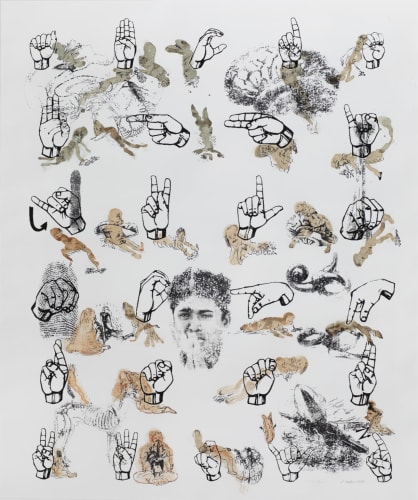Other than being a time-based medium that allows for metaphysical enquiry, video has also been harnessed to make complex, multimedia work with immersive environments and richly layered narratives. This is illustrated by Nalini Malani (b. 1946), who uses video as a key element in what she terms ‘video/shadow plays’; sensorial environments that incorporate painting, drawing, installation, projection, film, and animation.
Malani was born in Karachi a year before the creation of the modern state of Pakistan. Her family fled as refugees into India, and Malani settled in Bombay (current-day Mumbai), where she has lived and worked since 1958. The experience of displacement would form her lifelong commitment to investigating the effects of war and the dangers of fundamentalist thinking. Trained in classical painting at the Sir J.J. School of Art, she initially focused on painting (acrylic on canvas and watercolor on paper), portraying life in contemporary India, with a focus on gender and family issues. Drawing and painting would remain hallmarks of her practice; even as she moved into multimedia installations, her drawings are frequently used as projected animations.
Between 1969 and 1971, Malani was a member of the Vision Exchange Workshop, an interdisciplinary workshop for creatives working across different media, including animation, sculpture, and printmaking. There, she was introduced to film, and in 6 months, made three 8 mm and 16 mm films, including Dream Houses (1969), an abstract work inspired by Modernist Indian architecture. Over the years, Malani’s work became more ambitious in its technical complexity, with multimedia installations often taking the form of monumental and immersive shadow-play pieces that generate dynamic layers of imagery and sound.
A committed social activist, Malani has spoken out against nationalism, sectarianism, and violence against women. The video installation Unity in Diversity (2003), for example, responds to the 2002 riots in Gujarat between Hindus and Muslims, which involved a campaign of violent rape against Muslim women. The work mimics a middle-class Indian sitting room with red walls, where a large painting – actually a video in a gilded frame – comes to life. The video is based on the 19th-century Indian painting Galaxy of Musicians (1889) by Raja Ravi, which depicts 11 female musicians from different parts of India, dressed in their respective regional costumes and playing in harmony. In Malani’s video, the performance morphs into a bloodbath, interspersed by gunshots and screams, and the images of the orchestra transform into an army of women carrying rifles for self-protection.

